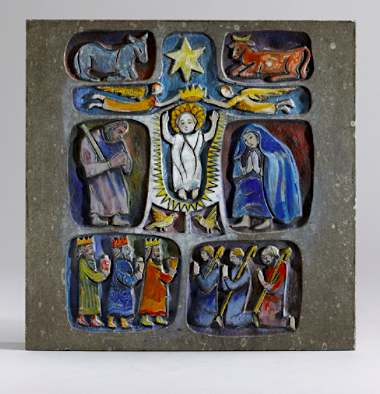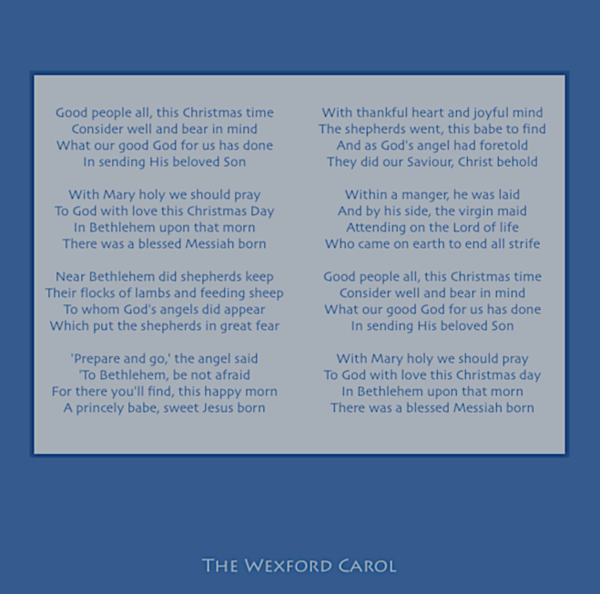Nativity

Gerard Dillon
Gerard Dillon (1916-1971), Limestone, painted.
The O'Brien Collection
A mostly self-taught artist, Belfast-born Gerard Dillon began painting full time in the late 1930s, having left school at the age of fourteen to pursue a career as a painter and decorator. He studied at the Belfast Technical School before moving to London in 1934. In the following decade, Dillon spent time in both London and Dublin, having exhibitions there and in Northern Ireland. His first solo exhibition was at the Country Shop in Dublin in 1942.
The place that significantly impacted the subject matter of Dillon's painting was the West of Ireland, particularly Connemara and the Aran Islands. There, he was intrigued by both the people and the landscape.
Dillon received international recognition in 1958, when he represented Ireland at the Guggenheim International Show in New York and, simultaneously, Great Britain at the Pittsburgh International Exhibition. During his career, he continually exhibited at the Victor Waddington Gallery, the Dawson Gallery, and at the Royal Hibernian Academy.. In 1972, a major retrospective of his work was mounted by the Ulster Museum and travelled to the Hugh Lane Gallery in Dublin.
From Marty Fahey:
In his limestone Nativity, Gerard Dillon turned his singular artistic vision towards a reverential treatment of an age-old theme, but co-mingled it with the medieval Irish artistic mechanism of separating the scenes into discreet “chambers,” as was seen on the carvings of the medieval Irish high crosses. He often employed this tactic in his paintings as well—separating scenes of activity by presenting them to the viewer as ‘micro-narratives’ in fields with boundaries of stone walls. This piece is, to our knowledge a “one-off,” as he tried his hand here at stone carving and then hand-painting the relief carvings.
The Wexford Carol is somewhat widely known, but, perhaps its Irish origins, less so.
The Wexford Carol, sometimes known by its first verse "Good people all this Christmas time," is claimed to be one of the oldest extant Christmas carols.The song achieved a renewed popularity due to the work of collector, musicologist, and author, William Grattan Flood (1859–1928), who was organist and musical director at St. Aidan's Cathedral in Enniscorthy, Wexford. He transcribed the carol from a local singer and had it published in The Oxford Book of Carols, putting Enniscorthy into most carol books around the world. Bard Francis, of the SCA Medieval Society, comments:
"This lovely tune, remarkable for its haunting Mixolydian Mode form, is unlikely to be 12th century, as has sometimes been stated. The words are maybe older than the tune, which likely came from the wave of Irish Music during the late 18th and through the entire 19th century, American Civil War period. Such rhyming words and tune structure had not been invented sufficiently in the 12th century, and it looks more like the 16th century if it can be proven to be earlier than the 18–19thc.” (Francis is assuming the original words were written in English but they were most likely written in Irish.)"
Here is a link to the wonderfully evocative recording of the piece by Yo-Yo Ma, Allison Krauss, Natalie Mc Master, Shane Shanahan, and Cristiano Pato. The piece is featured on the compact disc, "Songs of Joy and Peace—Yo-Yo Ma & Friends."
